The American Society of Human Genomics (ASHG) is the premiere professional membership organization for human genetics specialists, with a member base of nearly 8,000 professionals worldwide. Each year an ASHG meeting is held to bring the experts of the field together to share emerging science, tools, and frameworks.
The NIH Common Fund-supported Gabriella Miller Kids First Data Resource Center (Kids First DRC) was happy to once again participate in the annual meeting, held virtually on Zoom from October 18 to 22. For the 2021 meeting, the Kids First DRC presented a special demonstration and Q&A session geared towards early career researchers in the field, held on Tuesday, October 19. Intended to support researchers eager to connect with fellow investigators and access the resources needed for scientific discovery, the session was a great success with 95 total attendees.
This session presented attendees with everything they need to know to utilize data and resources through the Kids First Data Resource. Hosted by Dr. David Higgins, Scientific Community Program Manager for the Kids First DRC, the well-attended session took participants through the available datasets, various portal components, and the resources made available to assure all researchers get the most out of what KFDRC has to offer. Those resources include training opportunities, Kids First pipelines, and contact information for the Kids First Help Desk. The session was recorded, and is available to view on our YouTube Channel.
In addition to the presentation, Kids First was represented in several poster sessions by researchers from around the world.
Yiran Guo, a Kids First Investigator and a bioinformatician at the Center for Data Driven Discovery in Biomedicine (D3b) at Children’s Hospital of Philadelphia (CHOP) presented his work, Making Discoveries with Kids First Variant Database, to conference attendees through a poster session on Monday, October 18. Recently, two new components have been added to the Kids First portal: the Variant Search database and Variant Workbench. Both components enable researchers to focus on germline genetic variants, mutations in DNA that can be passed down from parent to child. While Variant Database provides summaries of such mutations, the Variant Workbench allows researchers to use scripting languages such as Python, Spark, SQL, and Markdown for even deeper analysis.
Utilizing the Variant Workbench, Guo’s work involves screening fibroblast growth factor receptor genes (FGFR), genes associated with the growth of connective tissue, for mutations found in genes in the kidney and urinary tract. Guo’s analysis identified a variant in a specific FGFR gene that is likely disease-causing and has been linked to multiple autosomal dominant genetic disorders. This work could advance the understanding of disorders associated with this variation and enhance pathways to more effective treatments.
In the same session, leading investigators from UCLA presented on their use of whole genome sequencing data from the Kids First Data Resource to better understand the genetic background of congenital heart disease (CHD) through the development of polygenic risk scores (PRS). PRS are developed by analyzing the effects of many different variations, or mutations, of the genome and the connections these variations have to a specific disease. Researchers hypothesized that PRS could identify CHD cases that can be explained by common genetic variants. Researchers also hypothesized that PRS will be related to severity of the disease. This team successfully developed a PRS for CHD using data available through a CHD cohort from KFDRC. This work could help explain the genetic basis of CHD because the development of these PRS shows that common variants can contribute to risk and severity of CHD. This deepened understanding of CHD paves the way for new discoveries in treating CHD related health problems.
Another group of leading investigators from Emory University presented their work, focused on de novo mutations in craniofacial regulatory elements in trios with orofacial clefts (OCFs). OFCs are the most common birth defect affecting the head and face, present in 1 in 700 births. De novo mutations (DNMs) are mutations in an individual’s DNA that originated in the sperm or egg of their parent. Like other structural birth defects, genes related to OFC are often found to have many such DNMs present. However, the contribution of these DNMs to the formation of OFCs is not well understood. Researchers analyzed whole genome sequencing data made available through the Kids First Data Resource and identified DNMs together with information related to human development timelines to determine the potential impact of such DNMs. Results from this analysis suggest that individuals with OFCs have an increased presence of DNMs in regions that are important during craniofacial development. Therefore, the understanding of DNMs as contributors to OFC formation is deepened by this work.
Lastly was a presentation on Adolescent idiopathic scoliosis (AIS), a common deformity of the spine that affects children. AIS is heritable, meaning it is passed down from parental DNA to child DNA, however the specific locations of AIS related genes have not been fully appreciated. Researchers from the Scottish Rite for Children collaborated with the Kids First Data Resource Center to perform a meta-analysis of genes related to cartilage development, to better understand the genetic origins of AIS. Researchers performed full genome sequencing on 72 families with AIS. This analysis resulted in the identification of rare mutations in multiple families. These mutations were in HAPLN1, a gene that encodes proteins responsible for stabilizing cartilage and intervertebral discs by binding with larger molecules found outside of the cell in the extracellular matrix (ECM). Previous evidence suggests that HAPLN1 stimulates ECM production. Using CRISPR, researchers engineered mice that have the HAPLN1 variations identified in genome sequencing, HAPLN1^C306FS5 and HAPLN1^C306S. Mice engineered with the HAPLN1^C306FS5 variation were born alive with structural defects and died shortly after. However, mice engineered with HAPLN1^C306S variation were born without structural defects and showed no significant abnormalities as they aged. Collectively, the data from this work suggests that loss of ECM-associated HAPLN1 may contribute to inherited AIS, thus expanding the understanding of this condition and its origins.
Overall, ASHG 2021 was a great success in promoting the mission and impact of the Gabriella Miller Kids First Data Resource Center, connecting researchers with our tools, and continuing to foster relationships within the genetics community. To learn more and to register with the Kids First Data Resource, visit us at kidsfirstdrc.org/portal/portal-features/ or contact us at support@kidsfirstdrc.org










